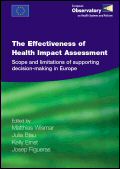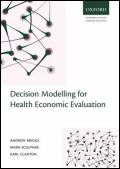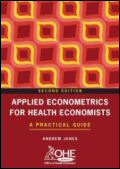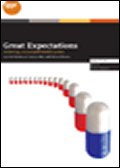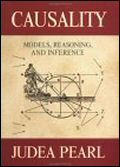LU POUR VOUS DE JANVIER 2008 : livres du mois - sites du mois - working papers
Tous les lu pour vous
LES LIVRES DU MOIS
The effectiveness of Health Impact Assessment : scope and limitations of supporting decision-making in Europe.
L'efficacité du "Health Impact Assessment" : domaine et limites dans leur apport aux politiques d'aide à la décision en Europe.
Wismar M., Blau J., Ernst K., Figueras J.
Bruxelles : Observatoire Européen des Systèmes et politiques de Santé ; Copenhague : Organisation mondiale de la santé, bureau régional de l'Europe : 2007 : 291 p.
Health impact assessment (HIA) is a support tool for intersectoral decision- and policy-making. It is used to assess the potential health consequences of pending decisions and it feeds this information back into the decision-making process. This book provides a detailed map of the use of HIA in the WHO European Region across a large range of sectors, including transport, environment, urban planning and agriculture, and at national, regional and local levels. It also reviews the implementation and institutionalization of HIA with specific focus on governance, financing, resource generation and delivery. HIA's effectiveness is explored and analysed in 17 case studies using a common analytical approach. This research also identifies the factors that contribute to the effectiveness of HIA. Overall the book demonstrates that HIA can be effective, while also revealing the uneven development and incomplete institutionalization of HIA across Europe. The book is based on a European research project funded under the European Union Public Health Work Programme. The research was led by the European Observatory on Health Systems and Policies and included research teams from 19 countries.
Decision modelling for health economic evaluation.
Modèle de décision pour l'évaluation en économie de la santé.
Briggs A., Claxton K., Sculpher M.
Oxford : Oxford University Press : 2006 : 237 p.
This book deals with the key techniques and approaches that can be used to estimate the cost-effectiveness of health care interventions. It is a practical guide, using examples and encouraging the reader to apply the methods. A supporting website is available.
Applied econometrics for health economists : a practical guide.
Econométrie appliquée pour les économistes de la santé : un guide pratique.
Jones A.
Abingdon : Radcliffe Publishing Ltd : 2007 : 120 p.
Applied Econometrics for Health Economists introduces readers to the appropriate econometric techniques for use with different forms of survey data, known collectively as microeconometrics. It provides a complete illustration of the steps involved in doing microeconometric research. The only study to deal with practical analysis of qualitative and categorical variables, it also emphasises applied work, illustrating the use of relevant computer software applied to large-scale survey datasets. This is a comprehensive reference guide – it contains a glossary of terms, a technical appendix, software appendix, references, and suggestions for further reading. It is concise and easy to read – technical details are avoided in the main text and key terms are highlighted.
Great expectations : achieving a sustainable health system.
Grandes attentes : comment réussir un système de santé soutenable ?
Rankin J., Allen J., Brooks R.
Londres : IPPR : 2007 : 48p.
It has long been understood that rising public expectations are one of the main cost pressures on the health service. This study assess how policymakers can reconcile high and rising public expectations with the need for a health system that is financially and politically sustainable. High expectations are not a bad thing. Both as taxpayers and service users, it is right and necessary that the public has high expectations about what public services can deliver. The public's expectations play a vital role in holding politicians and providers to account and maintaining momentum for progress and improvement. However, when expectations become unrealistic, this creates problems for the service. This is because expectations, often refracted though the media, can drive the health system in inappropriate ways. In this report we assess expectations as one of a number of cost pressures on the NHS. Particularly, we assess how, since 1997, the Labour Government has attempted to meet expectations through reform and increased funding but has simultaneously raised people's expectations. With the NHS turning sixty in 2008 and rates of spending growth set to slow significantly, this is a timely moment to revisit the service's aims and objectives. We argue that while there is no sudden move to NHS independence, there should be a move to geater local accountability, including Foundation Primary Care Trusts being established. There should be greater political and public recognition about the limits to the NHS, including the existence and need for rationing, and an expanded role for NICE allowing it to assess all new treatments and drugs for cost efficacy within a reasonable timeframe.
Causality : models, reasoning, and inference.
Causalité : modèles, raisonnement et inférence.
Pearl J.
Cambridge : Cambridge University Press : 2000 : 16-384.
Causality offers the first comprehensive coverage of causal analysis in many sciences, including recent advances using graphical methods. Pearl presents a unified account of the probabilistic, manipulative, counterfactual and structural approaches to causation, and devises simple mathematical tools for analyzing the relationships between causal connections, statistical associations, actions and observations. The book will open the way for including causal analysis in the standard curriculum of statistics, artificial intelligence, business, epidemiology, social science and economics.
LES SITES DU MOIS DE JANVIER
ANACT (Agence Nationale pour l'Amélioration des Conditions de Travail)
http://www.anact.fr/
Presentation
Etablissement public à caractère administratif, placé sous la tutelle du ministère chargé du travail.
Le site présente les activités et publications du réseau ANACT dont l'objectif est d'aider les entreprises à développer des projets innovants dans les domaines du travail et de son organisation. Son action est organisée autour des thèmes : Santé et travail ; compétences ; âge / travail / emploi, ; organisation du travail et les technologies. Pour chaque thématique, un dossier documentaire est en ligne avec les actualités, les ressources web et bibliographiques ainsi que des études et guides disponibles en texte intégral.
L'espace documentaire propose une série de liens sur des sites en rapport avec les conditions de travail, la consultation de la base documentaire de l'Anact (recherche simple ou avancée avec thesaurus) et un bulletin bibliographique des nouveautés mis à jour mensuellement.
Il propose également certaines de ses publications en accès libre et la liste des ouvrages pouvant être commandé aux éditions du réseau ANACT. Ce dernier édite une revue « Travail et Changement ».
Dossier du ministère du travail « Santé, sécurité, travail »
http://www.sante-securite.travail.gouv.fr/sous-dossiers.php3?id_rubrique=156&id_mot=340
Presentation
Ce dossier fait le point sur la santé et la sécurité au travail. On y trouve des informations sur la médecine du travail et la prévention des risques professionnels ainsi que des explications concrètes sur la marche à suivre en cas d'accident du travail. Il est structuré en trois parties : en pratique, actualités, études et chiffres. Cette dernière rubrique comprend essentiellement les publications de la Dares sur la thématique santé et travail.
INRS (Institut National de Recherche et de Sécurité pour la prévention des accidents du travail et des maladies professionnelles)
http://www.inrs.fr/
Presentation
Le site de l'INRS est dédié à la prévention des risques professionnels. Il propose, entre autres, des dossiers web qui constituent des synthèses sur des thèmes de prévention, des possibilités de recherches thématiques sur les catalogues de publications INRS (brochures, dépliants, affiches, produits audiovisuels).
Plusieurs bases de données sont consultables en ligne : tableaux des maladies professionnelles, fiches toxicologiques, Métropol, Biotox, Caces, Eficatt, Solvex, et EPICEA. La base Inrs biblio de données bibliographiques qui couvre la littérature scientifique et technique mondiale ainsi que la législation française et européenne en matière d'hygiène, de sécurité et de santé au travail.
Site des accidents du travail et des maladies professionnelles (Cnam)
http://www.risquesprofessionnels.ameli.fr/fr/accueil_home/accueil_accueil_home_1.php
Presentation
La branche AT / MP a la charge de gérer les risques professionnels auxquels sont confrontés les salariés et entreprises de l'industrie, du commerce et des services ainsi que quelques autres catégories (élèves de l'enseignement technique, stagiaires de la formation professionnelle, adhérents à l'assurance volontaire...). Il gère le système légal d'assurance des dommages corporels liés au travail salarié, met en œuvre la politique de prévention des risques professionnels et assure également la diffusion d'une information statistique diversifiée sur les risques professionnels. Toutes ses missions sont représentées sur son site avec des espaces consacré à la prévention, l'indemnisation, les cotisations et des données statistiques (chiffres clés, statistiques technologiques, trimestrielles et financières). Il propose également des dossiers et études sur des sujets d'actualités, un annuaire des CPAM, CRAM et CGSS.
Autres sites d'intérêt :
- AFFSET (Agence Française de Sécurité Sanitaire de l'Environnement et du Travail)
(http://www.afsse.fr/) - Agence Européenne pour la Santé et la Sécurité au Travail
(http://fr.osha.europa.eu/) - EUROGIP
(http://www.eurogip.fr/) - Observatoire Européen des Conditions de travail
(http://www.eurofound.europa.eu/) - OCIS (Centre International d'Informations de sécurité et Santé au travail)
(http://www.ilo.org/public/french/protection/safework/cis/index.htm)
VU DE L'ETRANGER : QUELQUES WORKING PAPERS ANALYSES
Assurance maladie
The influence of supplementary health insurance on switching behaviour: evidence on Swiss data. 

L'influence de l'assurance maladie complémentaire sur le changement de comportement : une évidence basée sur des données suisses.
Dormont B., Geoffard P.-Y., Lamiraud K.
Paris : PSE : 2007/10 : 31 p.
This paper focuses on the switching behaviour of sickness fund enrolees in the Swiss health insurance system. Even though the new Federal Law on Social Health Insurance (LAMal) was implemented in 1996 to promote competition among health insurers in basic insurance, there still remains large premium variations within cantons. This indicates that competition has not been able so far to lead to a single price, and reveals some inertia among consumers who seem reluctant to switch to less expensive funds. We investigate one possible barrier to switching behaviour, namely the influence of the supplementary insurance. Our aim is to analyse two decisions (switching decision in basic insurance, subscription to supplementary insurance contracts). We use survey data on health plan choice and import some market data related to the sickness funds (number of enrollees, premiums). The decision to switch and the decision to subscribe to a supplementary contract are estimated both separately and jointly. The results suggest that holding a supplementary insurance contract substantially decreases the propensity to switch. However the impact of supplementary insurance is not significant when the individual assesses his/her health as "very good" ; to the contrary, holding a supplementary contract significantly reduces the propensity to switch when the indivual's subjective health status deteriorates. Futhermore, the switching decision is positively influenced by the expected gain of switching. In comparison with the range of the premium difference, the limitations to switch due to the supplementary insurance is moderate, though non negligible. As for the decision to subscribe a supplementary contract, the results show that the income level has a direct positive influence on the propensity to buy a supplementary insurance. Our results suggest that a major mechanism is going on in relation to supplementary insurance: holding a supplementary contract might stop individuals from switching when the individual thinks that she/he could be regarded as a bad risk due to the selection practices that are allowed in supplementary insurance markets. This result bears major policy implications concerning the regulation of basic and supplementary insurance markets.
Public and private health care financing with alternative public rationing rules. 

Financement des soins de santé publiques et privés par des règles alternatives publiques de régulation
Cuff C., Hurley J., Mestelman S.
Ontario : McMaster University : 2007/10 : 43 p.
We develop a model to analyze health care nancing arrangements and under alternative public sector rationing rules. Health care is demanded by individuals varying in income and severity of illness. There is a limited supply of health care resources used to treat individuals, causing some individuals to go untreated. We examine outcomes under full public finance, full private finance, and mixed, parallel public and private finance under two rationing rules for the public sector: needs-based rationing and random rationing. Insurers (both public and private) must bid to obtain the necessary health care resources to treat their beneficiaries. While the public insurer's ability-to-pay is limited by its (fixed) budget, the private insurer's willingness-to-pay re ects the individuals' willingness-to-pay for care. When permitted, the private sector supplies supplementary health care to those willing and able to pay. The introduction of private insurance diverts treatment from relatively poor to relatively rich individuals. Moreover, if the public insurer allocates care according to need, the average severity of the untreated is higher in a mixed system than in a pure public system. While we can unambiguously sign most comparative static effects for a general set of distribution functions for income and severity, a complete analysis of the relationship between public sector rationing and the scope for a private health insurance market requires distributional assumptions. For a bivariate uniform distribution function we nd that the private health insurance market is smaller when the public sector rations according to need as compared to random allocation of health care.
Measuring annual price elasticities in Dutch health insurance: a new method. 

Nouvelle méthode pour mesurer l'élasticité-prix annuel au sein de l'assurance maladie aux Pays-Bas.
Douven R., Lieverdink H., Ligthart M., Vermeulen I.
La Hague : CPB : 2007 : 40 p.
This paper proposes a new method for estimating annual price elasticities from market share data of health insurers. In contrast to traditional methods the elasticity is derived from bilateral price elasticities which relate the net share of switchers between two health insurers not only to their premium difference but also to the market share and premium of the higher priced health insurer. Our new method explains the annual variation in the Dutch market share data better than the traditional methods. We find in the Dutch social health insurance for the period 1996-2005 rather low negative annual price elasticities ranging between -1 and 0. In that period stickiness of insurer choices was high and less than 5% of the population switched annually from health insurer. This result, however, was in sharp contrast with an exceptional high price elasticity of -7 for the year 2006, where after a major health care reform about 18% of the population switched mostly to lower priced health insurers. Besides large media coverage, one important difference with previous years was that many consumers holding an individual contract could switch to a lower priced group contract.
Dépenses de santé
Further evidence on the link between health care spending and health outcomes in England. 

Données complémentaires sur le lien existant entre dépenses de santé et résultats des programmes de santé en Angleterre.
Martin S., Rice N., Smith P.C.
York : University of York : 2007/12 : 50 p.
This report describes results from research funded by the Health Foundation under its Quest for Quality and Improved Performance (QQuIP) initiative. It builds on our earlier report for the Health Foundation – The link between health care spending and health outcomes: evidence from English programme budgeting data – that took advantage of the availability of a major new dataset to examine the relationship between health care expenditure and mortality rates for two disease categories (cancer and circulation problems) across 300 English Primary Care Trusts. Our results are useful from a number of perspectives. Scientifically, they confirm our previous findings that health care has an important impact on health across a range of conditions, suggesting that those results were robust across programmes of care and across years. From a policy perspective, these results can help set priorities by informing resource allocation across a larger number of programmes of care. They also add further evidence to help NICE decide whether its current QALY threshold is at the right level.
Inégalités de santé
Services for the homeless in France : Description, official statistics, client recording of information. A report for the European Commission. 

Services pour les sans domicile en France : description, statistiques officielles et enregistrement des informations sur les utilisateurs. Rapport pour la Commission européenne.
Marpsat M.
Paris : Ined : 2007 : 83 p.
Since official statistics on homelessness are well developed in France and are compiled with the collaboration of NGos and other organizations providing for the homeless, the description of these statistics will be easier to understand if the nature and type of organizations providing services and the services themselves are described before the official statistics are considered. Hence, the section on "Homeless service providers" precedes that on "approaches to data collection on homelessness".
Ethnicity and equity in the use of health care services in the Spanish national health care system. 

Ethnicité et équité dans l'utilisation des services de santé dans le système de santé espagnol.
Jimenez-Rubio D.
Grenade : Université de Grenade : 2007 : 30 p.
An important recent change in the Spanish society is the increasing proportion of the population who are immigrants. Immigrants often face situations of social exclusion and disadvantage, circumstances that may affect their health status. Empirical evidence about differences in health status or the utilisation of health services between native and immigrant population is however insufficient. This paper uses the 2003 National Health Survey to explore whether non-Spaniards, for the same level of need, use health care services at the same rate as national citizens. The findings show different patterns of health care use to the disadvantage of immigrants.
Professions de santé
Restrictions on the number of physicians and intergenerational inequalities : experience, time and vintage effects in GP's earnings. 

Restrictions du nombre de médecins et inégalités intergénérationnelles : expérience, temps et effet d'année sur les rémunérations des médecins généralistes.
Dormont B., Samson A.-L.
York : HEDG : 2007/07 : 22 p.
This paper analyses the regulation of ambulatory care and its impact on physicians'careers, using a representative panel of 6,016 French self-employed GPs over the 1983 - 2004 period. The beginning of their activity is infuenced by the regulated number of places in medical schools, named in France numerus clausus. We show that the policies aimed at manipulating the numerus clausus strongly affect physicians' permanent level of earnings. Our estimates allow us to identify experience, time and vintage effects in physicians' earnings. The estimated cohort (or vintage) effect appears to be very large, revealing that intergenerational inequalities due to fluctuations in the numerus clausus regulation are far from negligible. Cohorts of GPs beginning during the eighties have the lowest permanent earnings: they faced both the baby-boom numerous cohorts and the consequences of a high number of places in medical schools. Conversely, the decrease in the numerus clausus led to an increase in permanent earnings of GPs who began their practice in the mid nineties. Overall, the estimated gap in earnings between "good" and "bad" cohorts may reach 25%. We performed a more thorough analysis of the earnings distribution to examine whether individual unobserved heterogeneity could compensate for average differences between cohorts. Our results about stochastic dominance between earnings distributions by cohort show that it is not the case.
How much uncompensated care do doctors provide ? 

Quel est l'ampleur des soins non rémunérés prodigués par les médecins ?
Gruber J., Rodriguez D.
Cambridge : NBER : 2007/11 : 39 p.
The magnitude of provider uncompensated care has become an important public policy issue. Yet existing measures of uncompensated care are flawed because they compare uninsured payments to list prices, not to the prices actually paid by the insured. We address this issue using a novel source of data from a vendor that processes financial data for almost 4000 physicians. We measure uncompensated care as the net amount that physicians lose by lower payments from the uninsured than from the insured. Our best estimate is that physicians provide negative uncompensated care to the uninsured, earning more on uninsured patients than on insured patients with comparable treatments. Even our most conservative estimates suggest that uncompensated care amounts to only 0.8% of revenues, or at most $3.2 billion nationally. These results highlight the important distinction between charges and payments, and point to the need for a re-definition of uncompensated care in the health sector going forward.
Santé et travail
Does working longer make people healthier and happier ? 

Calvo E.
Munich : Munich University Library : 2007/11 : 8 p.+annexes
While it is clear that working longer would benefit older Americans financially, less attention has focused on the non-monetary effects of work at older ages. This brief addresses the impact of late-life paid work on physical and psychological well-being. The first section reviews the literature on work at older ages and elderly well-being. The second section describes the analysis. The third and fourth sections present the results. The fifth section identifies vulnerable groups. A final section offers concluding thoughts.
Systèmes de santé
Improved health system performance through better care coordination. 

Amélioration de la performance des systèmes de santé grâce à une meilleure coordination des soins.
Hofmarcher M.M., Oxley H., Rusticelli E.
Paris : OCDE : 2007 : 85 + 74 p.
L'objet de ce rapport est de tenter d'apprécier si - et, le cas échéant, dans quelle mesure - une meilleure coordination des soins est susceptible d'améliorer la performance des systèmes de santé en termes de qualité et d'efficience au regard du coût. Par coordination des soins on entend les mesures de nature à aider à instaurer une prise en charge centrée sur le patient qui soit plus cohérente aussi bien à l'intérieur d'un même cadre de soins qu'entre différents cadres de soins, et dans le temps. Plus généralement, il s'agit de faire en sorte que les systèmes de santé soient plus attentifs aux besoins individuels des patients et de faire en sorte que ceux-ci reçoivent les soins appropriés à l'occasion d'épisodes aigus, ainsi que des soins destinés à stabiliser leur état de santé, dans une perspective à long terme, dans un environnement moins coûteux. Ces questions revêtent une importance toute particulière pour les malades chroniques et pour les personnes âgées qui trouveront sans doute difficile de « naviguer » à l'intérieur de systèmes de santé fragmentés comme c'est souvent le cas dans les pays de l'OCDE.
Toxicomanie
Using cigarette taxes when smokers are heterogeneous : evidence on hyperbolic preferences, endogenous preferences, smoking, and price elasticity of smoking in France. 

Utilisation des taxes sur la cigarette quand les fumeurs sont hétérogènes : évidence sur les préférences hyperboliques, les préférences endogènes, le tabagisme et l'élacticité-prix du tabagisme en France.
Grignon M.
Ontario : McMaster University : 2007 : 45 p.
The author uses a unique dataset to estimate the relationship between time preferences, social capital, and the decision to start and quit smoking. He finds impatient respondents do not differ much from patient ones, but quasi-hyperbolic respondents tend to smoke more often and have much more difficulties quitting. He also finds that trust in the community protects from starting and helps quitting, but sense of control encourages starting smoking. These preliminary results strongly suggest that smokers form a heterogeneous population: the author argues that such heterogeneity means that taxes on cigarettes are a blunt and inefficient instrument of public health.
The mortality cost to smokers. 

Viscusi W.K., Hersch J.
Cambridge : NBER : 2007/11 : 37 p.
This article estimates the mortality cost of smoking based on the first labor market estimates of the value of statistical life by smoking status. Using these values in conjunction with the increase in the mortality risk over the life cycle due to smoking, the value of statistical life by age and gender, and information on the number of packs smoked over the life cycle, produces an estimate of the private mortality cost of smoking of $222 per pack for men and $94 per pack for women in 2006 dollars, based on a 3 percent discount rate. At discount rates of 15 percent or more, the cost decreases to under $25 per pack.
Vieillissement
Life-expectancy risk and pensions. Who bears the burden ? 

Risque lié à l'espérance de vie et pensions de retraite. Qui supporte la charge ?
Whitehouse E.
Paris : OCDE : 2007 : 44 p.
Les deux tiers des réformes des systèmes de retraite dans les pays de l'OCDE ces 15 dernières années comportent des mesures prises pour indexer de manière automatique les futures retraites sur l'évolution de l'espérance de vie. Cette révolution qui s'opère tranquillement dans les politiques de pensions signifie que les coûts financiers engendrés par des vies plus longues seront partagés entre les générations en appliquant une règle plutôt que de répartir cette charge sous l'action de conflits politiques, tel que dans le passé. Par conséquent, près de la moitié des pays de l'OCDE - 13 sur 30 - ont maintenant des liens automatiques entre les pensions et l'espérance de vie dans leurs régimes de retraite, comparé à seulement un pays (Danemark) il y a dix ans. En effet, cette politique apparaît comme étant une des innovations plus importantes en matière de politiques de pensions ces dernières années. Le lien fait à l'espérance de vie a été réalisé de quatre manières différentes...
A theory of retirement. 

Une théorie de la retraite.
Bloom D.E., Canning D., Moore M.
Cambridge : NBER : 2007/11 : 39 p.
We construct a life-cycle model in which retirement occurs at the end of life as a result of declining health. We show that improvements in life expectancy, coupled with a delay in the onset of disability, increases both the optimal consumption level and the proportion of life spent in leisure. The retirement age increases proportionally less than the increase in life expectancy.
